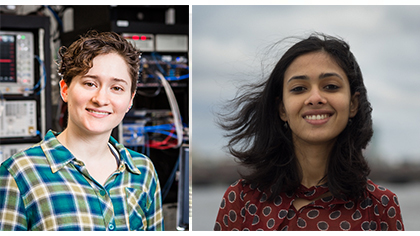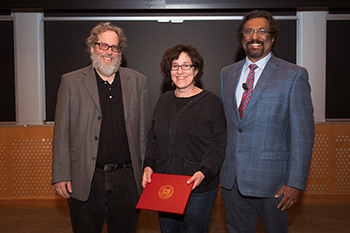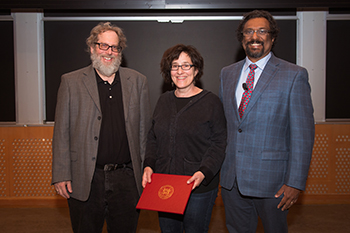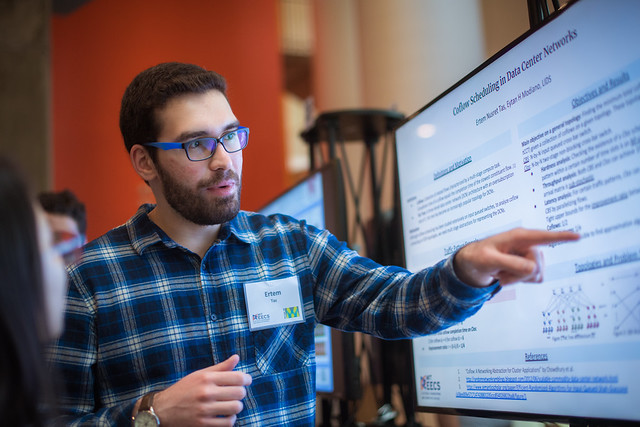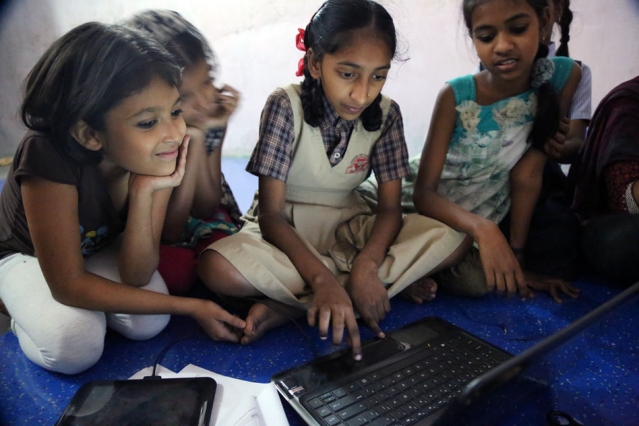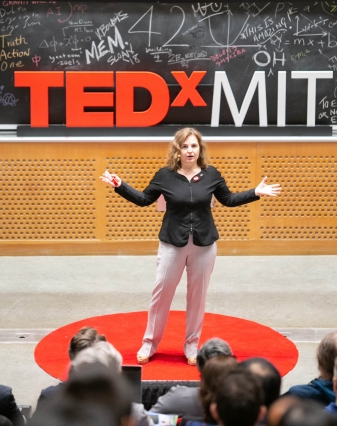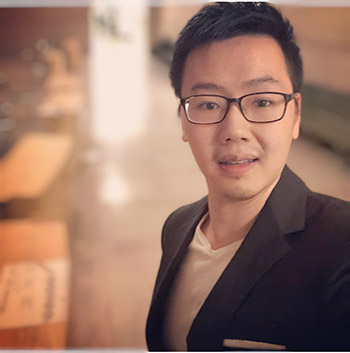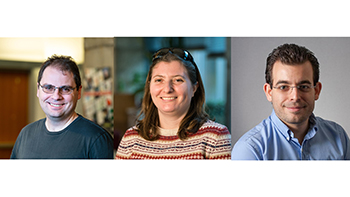MIT News Office
Thank you, Trevor! And thank you, Mike, for your thoughtful and inspiring remarks.
To the graduates of 2019: Congratulations! My job today is to deliver a “CHARGE” to you… and I will get to that in a minute. But first, I want to recognize the people who helped you charge this far!
To everyone who came here this morning, to celebrate our graduates – welcome to MIT!
And to the parents and families of today’s graduates, a huge “Congratulations” to you as well! This day is the joyful result of your loving support and sacrifice. Please accept our deep gratitude and admiration.
(Now, graduates, for this next acknowledgment, I need your help. Over my left shoulder, there’s a camera. In a moment, I’m going to ask all of you to cheer and wave to it, all right? Just cheer and wave. And I would love it if you make it… loud!!)
Next, I would like to offer a special greeting to all those who were not able to come to campus, but who are cheering-on today’s graduates online, from locations all over the globe. We are very glad to have you with us, too!
Now, graduates, this is the moment! Please cheer and wave! Now, wait. I’m pretty sure you have taken physics and electricity – so you know something about amplification.
So let’s try this again. (And remember … I still have your diplomas!)
So one more time – let’s cheer and wave!
It is great to have all of you here on Killian Court, on this wonderful day, for this tremendously important occasion.
But before we send our new graduates out into the world, first, I must beg your indulgence, on behalf of… my wife. Christine Reif is a wonderful person. (And she’s sitting right there.) But she has one weakness: She is crazy about astronauts, and about outer space.
July 20th of this year marks 50 years since the first human walked on the Moon. For those of you graduating, I know this is ancient history – your parents’ history! Or even your grandparents’! So perhaps not all of you have been focused on the 50th anniversary of Apollo 11.
But because Mrs. Reif also loves the Institute, she has asked that, in addition to giving you a charge, I also prepare you for a mission.
In the next few weeks, you will encounter all sorts of Moon-landing hoopla. So she wants to make sure that every one of you is well-equipped with precisely engineered conversation deflectors. That way, when people start talking on and on about NASA, and Houston, and the great vision of President Kennedy, you can steer the discussion right back to MIT.
So to do this, I’m going to give you one final little prep quiz. I read the question…and you fill in the blank, OK? (And please make it loud!)
(And to the parents and grandparents: Texting them the answers is not allowed!)
Ready?
QUESTION ONE:
In 1961, NASA realized that the Moon-landing required the invention of a computer-guidance-system that was miniaturized, foolproof and far more powerful than any the world had ever seen. So NASA did not call Harvard. NASA called ____________ [“MIT!”]
I knew you would be good at this!
QUESTION TWO:
The first person to walk on the Moon was a man. But at MIT, among the very first programmers hired for the Apollo project was not a man, but a ____________ [“Woman!”]
A woman! You got it! Her name is Margaret Hamilton. She played a key role in developing the software that made the moon-landing possible. By the way, Margaret Hamilton was also one of the first to argue that computer programming deserved as much respect as computer hardware. So she insisted on describing her work with a brand-new term: “software engineering.”
OK, just one more.
QUESTION THREE:
The second person to walk on the moon was Buzz Aldrin. Buzz was the first astronaut to have a doctoral degree, and he earned it from the school that has produced more astronauts than any non-military institution. In fact, of the 12 humans who have walked on the moon, four graduated from that same institution…which is known by just three letters: [“MIT!”]
You are brilliant! I knew you could do it! “The Beaver has landed!” Mrs. Reif, I believe they are ready.
As you prepare for lift-off, I would like to use the Apollo story to reflect on a few larger lessons we hope you learned at MIT… because the spirit of that magnificent human project speaks to this community’s deepest values…
and its highest aspirations.
The first lesson is the power of interdisciplinary teams. We live in a culture that loves to single-out heroes. We love to crown superstars.
As graduates of MIT, however, I expect you are already skeptical of stories of scientific triumph that have only one hero. You know by now that if you want to do something big, like detect gravitational waves in outer space, or decode the human genome, or tackle climate change, or finish an 8.01 pset before sunrise – you cannot do it without a team.
As Margaret Hamilton herself would be quick to explain, by 1968, the MIT Instrumentation Laboratory had 600 people working on the moon-landing-software. At its peak, the MIT-hardware-team was 400! And from Virginia to Texas, NASA engaged thousands more.
In short, she was one star in a tremendous constellation of talent. And together, those stars created something impossible for any one of them to create alone.
From your time at MIT, I trust all of you have experienced that feeling – of learning from each other, respecting each other, and depending on each other. And I hope that this instinct for sharing the work, and sharing the credit, is something you never forget.
The Moon-landing-story reflects many other MIT values. To seek-out bold ideas. To not be afraid of “impossible” assignments. And always, to stay humble (especially when it comes to the laws of nature!) The Apollo story also proves how much human beings can accomplish when we invest in research, and put our trust in science.
But the final lesson I want to emphasize is not technical, and it could not be more important for our time.
Just over on that side of Killian Court, showing off their spectacular red jacket, are more than 170 members of the Class of 1969. Apollo 11 landed on the Moon a few weeks after their MIT graduation. A number of them went on to work in fields that were greatly accelerated by progress from Apollo 11. (One of them is Irene Greif, the first woman to earn a Ph.D. in computer science from MIT!)
But I believe our 1969 graduates might all agree on the most important wisdom we gained from Apollo: It was the sudden, intense understanding of our shared humanity and of the preciousness and fragility of our blue planet.
Fifty years later, those lessons feel more urgent than ever. And I believe that, as members of the great global family of MIT, we must do everything in our power to help
make a better world. So it is in that spirit that I deliver my charge to you.
I’m going to use a word that feels very comfortable at MIT – although it has taken on a troubling new-meaning elsewhere. But I know that our graduates will know what I mean.
After you depart for your new destinations, I want to ask you to hack the world – until you make the world a little more like MIT: More daring and more passionate. More rigorous, inventive and ambitious. More humble, more respectful, more generous, more kind.
And because the people of MIT also like to fix things that are broken, as you strive to hack the world, please try to heal the world, too.
Our society is like a big, complicated family, in the midst of a terrible argument. I believe that one-way to make it better is to find ways to listen to each other, to understand our differences, and to work constantly to remind each other of our common humanity. I know you will find your own ways to help with this healing, too.
This morning, we share with the world nearly 3,000 new graduates who are ready for this urgent and timeless problem-set.
You came to MIT with exceptional qualities of your own. And now, after years of focused and intense dedication, you leave us, equipped with a distinctive set of skills and steeped in this community’s deepest values: A commitment to excellence. Integrity. Meritocracy. Boldness. Humility. An open spirit of collaboration. A strong desire to make a positive impact. And a sense of responsibility to make the world a better place.
So now, go out there. Join the world. Find your calling. Solve the unsolvable. Invent the future. Take the high road. Shoot for the Moon! And you will continue to make your family, including your MIT family, proud.
On this wonderful day, I am proud of all of you. To every one of the members of the graduating Class of 2019: Please accept my best wishes for a happy and successful life and career. Congratulations!
